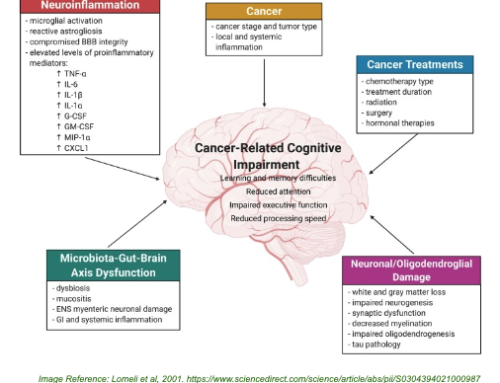The healthcare sector is rapidly adopting wearable technology in the form of apps and devices to enable self-monitoring, particularly involving chronic conditions.
Motivation is a major factor of health behaviour change, and intrinsically motivated behaviour change has been found to be highly desirable as it is both sustained and directly contributes to well-being. Therefore, it’s important to know what kind of interventions are best positioned to intrinsically motivate health behaviour change?
Largely driven by improvements in technology, AI and machine learning coupled with the widespread availability of WiFi means individuals are now positioned to collect a continuous stream of personal health data.
Healthcare professionals are turning to ‘gamification’ to model prospective methods of increasing health and wellness education effectiveness as well as enhancing patient engagement.
So, What Exactly Is Gamification?
Gamification uses well-established game mechanics and gaming design techniques in non-game environments to deliver an engaging and enjoyable interface for patients while simultaneously solving health-related issues.
Experience indicated several healthcare aspects can be further enhanced by stimulating behavioural changes, which a percentage of patients often struggle with.
Gamification of these health behaviour changes and health communication programs have proven helpful in promoting engagement amongst potential patients and in motivating existing patients.
By adopting gamification techniques to non-game situations, patient problem solving can be improved and repetitive, routine tasks made more enjoyable delivering greater engagement rates amongst healthcare audiences.
Gamification Defined
Gamification can simply be defined as a “the use of game design elements in non-game contexts” (Deterding et al., 2011).
Cross-Industry Applications
Numerous industries are exploring Gamification in environments including the digital healthcare community to convert audiences into engaged players by exposing them to fun, enjoyable experiences.
In a healthcare context, observers are seeing gamification is typically adopted for health and wellness apps, digital health programs aimed at disease prevention, medication compliance or driving greater personal healthcare self-management and in education-oriented medical simulations.
Applying Gamification to Digital Health Services
A 2016 systematic review into gamification for health and wellbeing concluded that:
“Overall the evidence suggests gamification can have a positive impact for health and wellbeing related interventions. “
“The evidence is strongest for the use of gamification to target behavioural outcomes, particularly physical activity.”
In many health and wellness apps, corporate focused healthcare, weight-loss programs, medication compliance and health self-management contexts gamification commonly operates in three ways:
- Measuring success and thus the perceived value of the experience using progress bars to stimulate goal-oriented psychological biases
- Awarding rewards such as stars, medals or badges at each stage, channeling a sense of achievement and increasing subsequent participant motivation
- Sharing results and progress with their friend or peer groups or other service participants to create a competitive environment designed to drive greater usage and increased adoption of the service.
Examples of Gamification in advanced healthcare contexts include applications in gamified exercises for individuals with a movement impairment, people with a history of back pain and seniors have been designed using real-time biofeedback sourced from gesture-control technology and standardised motion-capture sensors.
Moreover, employing 2D & 3D comics in combination with a structured story-telling model has proven to be effective in delivering expanded explanations around patient behaviour, modification, medical procedures and diagnostic-related healthcare literature.
Driving Patient Engagement Levels
Many major healthcare cost areas attributable to chronic illnesses are currently treated with a mix of medication and changes in lifestyle. Many of these patients fail to adhere to their therapeutic regimes.
Healthcare companies have identified this trend and are developing a range of digital assets including apps and games to encourage compliance with therapeutic recommendations.
Gamified Internet-delivered education tools together with diabetes disease management apps help maintain user motivation in both adults and children by continuously overseeing their blood glucose levels and actively monitor their diabetes.
A second diabetic motivational tool connects a child’s blood glucose monitor to a gaming platform. It rewards consistent blood glucose monitoring with points.
Hemocraftä modified from a successful Nintendo video game engages haemophilic children. These games assist children in understanding that their routine tasks can have a positive influence on their health. These games are powerful reinforcers of positive beneficial behaviours that manage their condition.
Medical Educational
Gamification is finding its way into continuing medical education programs for healthcare professionals as well as educational kits for medical sales representatives.
One example is an interactive game teaching sales representatives to handle objections and other sales techniques. This methodology enables trainees to experience real-time feedback during their training, increasing engagement levels compared to traditional techniques.
Educational games can be used to provide readily absorbed CME lessons to time-poor healthcare professionals. They feature competitive components such as leader boards and rankings to continuously motivate and engage participants.
Another game has reported higher levels of engagement by delivering short lesson packs to assist users to diagnose and treat virtual patients due to the game’s entertaining nature.
Game on!
The application of behavioural economics principles to a healthcare environment has been revolutionised through adopting technology-enabled video gaming concepts. However, challenges around patient privacy, data security, and regulatory standards remain to be mapped out if the technique is to enjoy long-term success.



